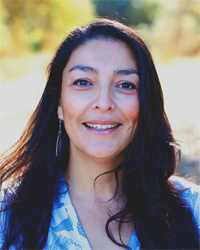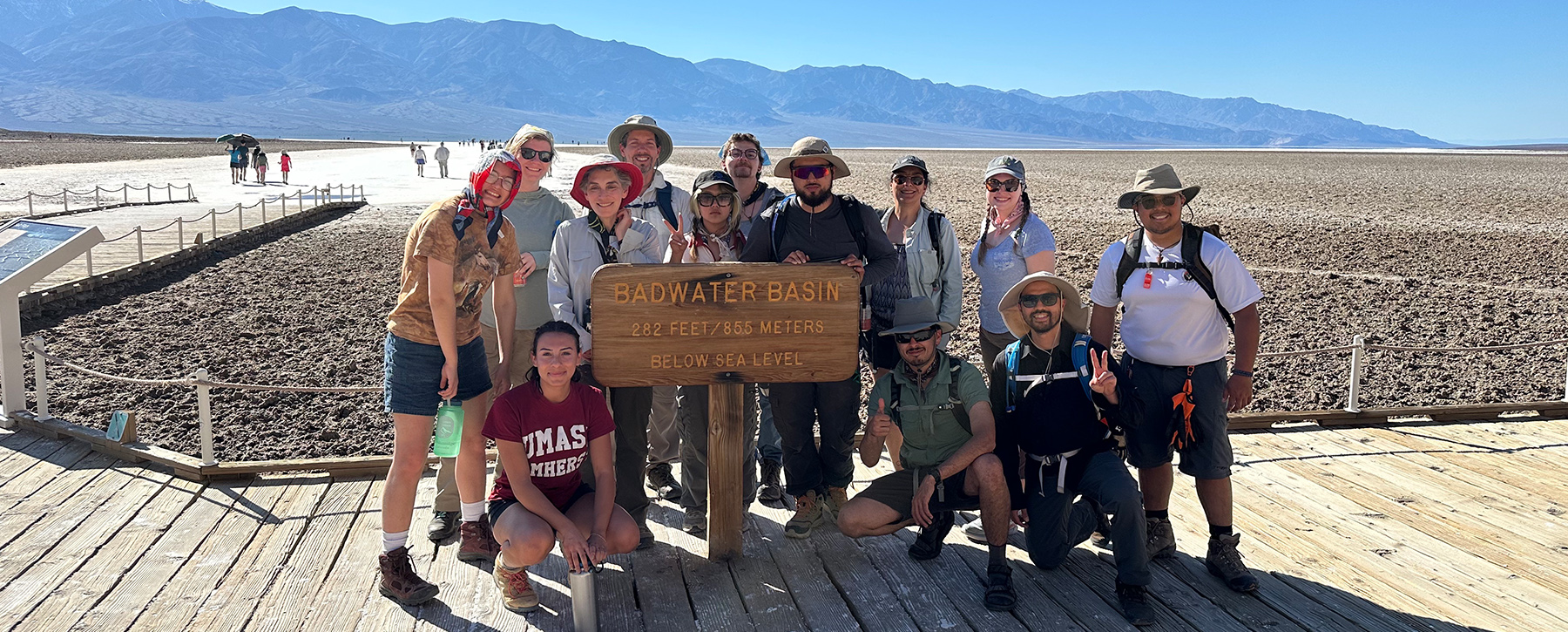‘I could do this!’ | Field course programs cultivate future biologists, conservationists-at-heart
Leticia Gallardo, Biology Department co-chair, jokes that she was born a biologist. She was that kid who flopped on the ground for hours, studying up-close grass species sprouting around her home.
Today, she’s approaching 20 years of leading West Valley College students into the field to discover their own inner biologist. Through field course programs, such as one that took 12 students to Death Valley in March, Gallardo introduces participants to the natural environment and biodiversity of California from mountains to desert, instilling appreciation for species adaptation to extreme climates and a conservation mindset.
“I am just awed by biodiversity and evolution,” she says, noting that field course students quickly become enthusiastic, too. “We stop, we look up close. We see color, we see shapes. Stand back: what does it look like as a shrub? It's shaping their eyes to noticing nature.”
As a first-generation student—like many of her WVC students—there was no guarantee Gallardo would find her way into the sciences. “I didn’t grow up thinking: I’m going to college, I’m going to be a biologist,” Gallardo recalls.
Then she stumbled across field course experiences at community college.
“They changed my life,” says Gallardo, who launched WVC’s program in 2006 with an emphasis on conservation and equity. “They are formative experiences for students. Now I get to do the same thing and change people’s lives.”
Each spring, enrollees in Gallardo’s Field Ecology course head to Death Valley; while in the fall, her Ecology of the Sierra Nevada course students explore the western and eastern Sierra Nevada and western slope of the White Mountains near Owens Valley. Enrolled students represent a range of majors from architecture to park management as well as STEM fields.
In fact, she says, she takes students to many of the places she once explored as a biology undergrad.
“This mountain range, the sky; even still now, every time I drive there: dopamine!” Gallardo says. “We don't go to established campgrounds. We are out. We are waking to the sounds of nature, and we're getting in tune to the natural environment.”
For many in her classes,field course participation represents their first time away from home or their first time camping. Studies have identified factors that help foster inclusion and diversity in the sciences. They include multiple boxes ticked off in a WVC field course, such as: building confidence in science skills, developing comfort in outdoor settings, working and traveling in teams and seeing role models in action.
By the end of the most recent multi-day excursion, students had pitched tents alongside Mono Lake’s sculptural tufa towers; flipped through field guides to identify animal tracks; trekked up Eureka Dunes, the highest sand dunes in the state; scraped the salty surface of Badwater Basin, the lowest point in the state; peered through binoculars in daylight and conducted night surveys using UV lights.
“They get to know: I could be a field biologist; I could do this!” Gallardo says.
As part of their coursework, each student is assigned one plant and one animal to research. As the group comes across examples of desert gold wildflowers, prickly pear cactus or a desert iguana, the student assigned that species delivers an in-the-field presentation on-the-spot.
For the first time in the program's history, students participating in the March 29 to April 3 field course spotted a sidewinder rattlesnake. Not knowing what species they’ll encounter contributes to an atmosphere of discovery and awe, Gallardo says. As a partner in the National Science Foundation-funded SOAR program—a collaborative project with Stanford, Santa Clara and San Jose State universities—Gallardo weaves an avian unit into each field course. The San Francisco Bay Research Coordination Network for Student Opportunities in Avian Research, or SOAR for short, is building a program to diversify career options for students while also diversifying those acting as environmental stewards.
Given weather fluctuations—it rained and snowed on the spring group—students may or may not spot many migratory birds in the field, prompting further discussion about climate change, adaptation and the role of water conservation, Gallardo explains. Fortunately, it’s a given that students will see the subject of her perennially most popular Death Valley lecture topic: the Joshua Tree Woodlands.
“I don’t know why this lecture is always their favorite,” she said. “I think it's because it's just so weird looking, it's sort of Dr. Seuss-y.”
When student Donovan Belardes heard he could take a course about the ecology of California deserts in the field, he says, he sprinted to sign up—and was wowed by what he experienced.
“While I knew I would gain valuable knowledge of how desert ecologies function, I underestimated just how much connection I would build to the areas we visited,” Belardes says. “I will now be able to return to these areas with the ability to interpret the challenges and adaptations to others, sharing this connection."
It’s feedback Gallardo interprets as a field course program win.
“The first step in conservation is inspiring awe,” she says. “That’s what this is all about.”

